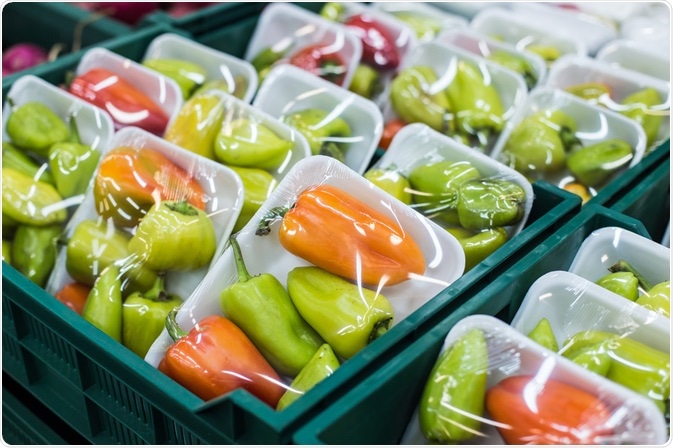Most developed countries have regulatory agencies responsible for ensuring that food manufacturers are distributing products safe for human consumption within non-toxic packaging. Several techniques have been tried and tested for the analysis of food packaging, or food contact materials, but chromatography is the preferred method.
 Goncharov_Artem | Shutterstock
Goncharov_Artem | Shutterstock
Food packaging
Food packaging materials have traditionally been composed of glass, metals, paper, paperboard and plastics that are often combined with various inks, adhesives and coatings. Each of these materials are carefully assessed for their effectiveness to preserve food products, and if any potentially unwanted chemical residues from these materials can migrate into food.
To ensure that food manufacturers are adhering to these regulations, federal agencies like the FDA are responsible for evaluating these products through several scientific methods.
Challenges in analyzing food contact materials
One of the primary challenges associated with the analysis of food contact materials is that these materials are designed to remain in their solid state and not break apart. Furthermore, standardised methods are lacking in all aspects of the safety assessment process. This includes interpretation and validation of data acquired from high-throughput screening tests, in vitro assays, computational toxicological procedures, as well as the assessment of potential exposure pathways.
Scientists at federal agencies are often develop their own methods to detect and measure the presence and/or quantity of contaminants that can leach from materials into food. The type of laboratory technique that will be used for this purpose depends on whether the analysis is targeted or non-targeted, and the type of contaminant being evaluated.
In addition to the need for scientists to develop standard analytical methods, federal agencies must also develop more efficient reference materials that can limit the occurrence of false negatives and/or positives.
Chromatographic approaches to food packaging material analysis
Mass spectrometry (MS) and gas chromatography
Various chromatographic approaches are often used to analyse food packaging materials, many of which are combined with mass spectrometry (MS) in an effort to isolate and detect residues in food chemicals.
Gas chromatography (GC) separates and analyzes volatiles following vaporization without causing any decomposition of the analyte. Commonly used GC techniques include column chromatography, ion-exchange chromatography, thin-layer chromatography and several others.
HPLC
High-performance liquid chromatography (HPLC), a useful technique to separate and identify various biological molecules, including amino acids, carbohydrates, lipids, nucleic acids and proteins, can also be used to accurately detect non-volatile compounds present within food packaging materials. When either of these types of techniques are used, it is crucial for the scientists to ensure that the analyte is able to successfully move through the injection system and that proper positive controls are used.
What does the future look like for food packaging materials?
Since 1967, various paper coatings were approved for their use in food packaging materials. Due to the lack of instrumentation to analyze paper coating residues, it was not until 2003 when researchers confirmed the presence of perfluoroalkyl substances (PFAS) in paper coatings.
These contaminants were also found in the serum of occupational workers in the food manufacturing industry. This data was particularly worrisome as PFAS, which are bio-persistent chemicals, exhibit both reproductive and teratogenic toxicity.
After FDA researchers developed a method to accurately detect and measure the presence of PFAS in food packaging, this chemical was classified as a contaminant and forced food manufacturers to eliminate this coating from their products. This is just one example of how the limited ability of federal agency to evaluate the potential toxicity of food packaging materials can significantly impact the health of millions.
Further Reading
Last Updated: Nov 13, 2018